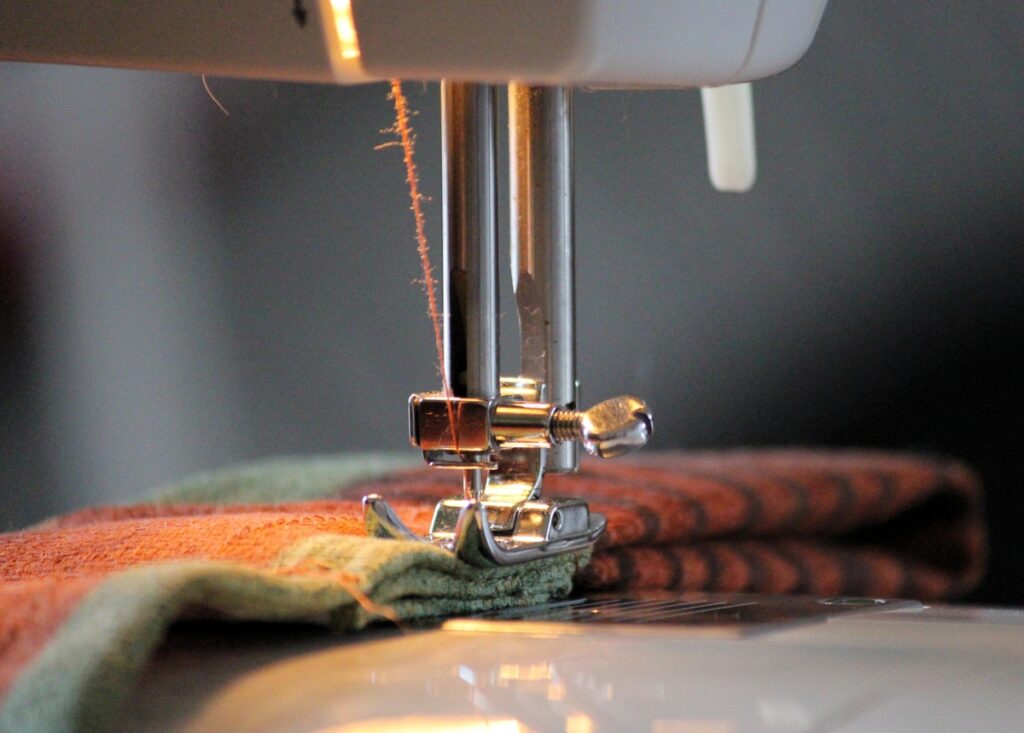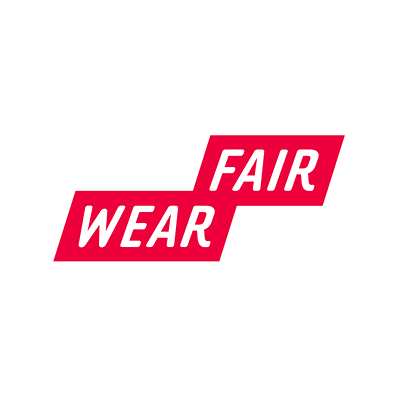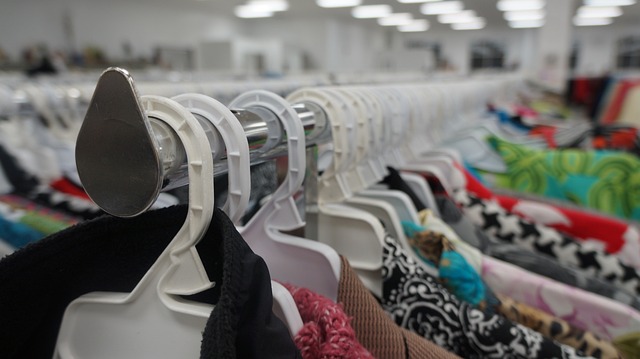
Fast Fashion

People used to wear clothes until they couldn’t anymore, eventually putting the scraps to use as washcloths. Now clothes are used to adorn our bodies and to make us look trendy and attractive. In recent years, trendiness has become more important, causing a spike in fast fashion. Fast fashion is known for its short-product life cycles and cheap prices coupled with consumers’ impulse buying. Ultimately, this results in massive amounts of waste.
Origins of Fast Fashion
Like other industries, fashion was revolutionized during the industrial revolution, which introduced a bunch of new technological advances. Instead of clothes being made-to-order, they could now be made in bulk in various sizes.
According to Fashionista, the introduction of the sewing machine in 1846 contributed to the drastic drop in clothing prices. It also led to an expansion in the size of the garment manufacturing industry. Local dressmaking businesses typically made apparel for middle-class women, while lower-income women continued to make their own clothing. Local dressmaking businesses normally employed a group of workers in the workroom, while some tasks were delegated to “sweaters” or people who worked from home for low pay.

It wasn’t until after World War II that people started wearing mass-produced clothes. This was due to an increase in the production of standardized clothing during the war.
However, fashion trends didn’t start fluctuating at an extreme rate until the 1960s. Younger people wanting to stay up to date with the latest trends resulted in them buying cheaply made clothes. After a while, fashion brands needing to keep up with the high demand for affordable, trendy clothes started outsourcing their labor. Now, we see “sweaters” being outsourced globally.
We don’t know where fast fashion originated from since shops linked to fast fashion, like Zara and H&M, mainly started as small shops. We can define fast fashion as the reduction of time in the fashion cycle due to the mass production of trendy clothes. Although these clothes are affordable since the quality is low, they’re hardly sustainable since companies promote them as trendy. Once the trend is over, people dump their clothes in the trash or thrift stores. Sometimes trends last less than a week before the new styles arrive.
Fast Fashion Controversies
During the pandemic, many people had no choice but to resort to online shopping. Notably, the fast fashion brand Shein reached its peak during this time. Not many people were knowledgeable about Shein or its background and just assumed they were getting cute, affordable items.

In an article written by Jerren Gan on Medium, Shein markets itself as a business-to-consumer fast fashion e-commerce platform offering on-trend styles to young women and teens. A search on a platform like TikTok will show you who their target audience is, who they show across their social media platforms.
We’ve since learned that Zara and H&M are fast fashion, but Shein relatively took fast fashion to a new level. Zara and H&M do watch trends, but it’s estimated that they take three weeks to release new designs. By comparison, Shein rolls out new designs in as little as five to seven days. This way, Shein continues to push out designs, ultimately creating new trends instead of watching them like their counterparts.
Many questions surrounding Shein remain unanswered. Consumers and regulators alike have accused Shein of child labor, exploitative labor practices, toxic chemicals in clothes like lead, ripping off designs from small designers, mishandling customer data, and impacting the environment negatively. Shein responds with simple statements on their website declining them, yet has shown no evidence.
However, consumers have reason to believe that Shein is not upholding their statements. For example, SHEIN scored a two for its supply chain traceability and governance in this year’s Fashion Transparency Index (FTI). This index was created by Fashion Revolution to determine the transparency of brands. This score means Shein shares little to no policy details with the public, only sharing those required by law.
Misconceptions About Fast Fashion
Fast fashion is often described as affordable. When we think about fast fashion nowadays, our brains jump to Shein. Still, your favorite brand might participate in fast fashion without realizing it if they’re pricey. For example, Zara tends to shock people since they market their products as more up-scale with higher prices than typical fast fashion businesses.
In addition to assumed affordability, the most common misconception around fast fashion is that if it’s “expensive,” then it must be ethically made. However, this isn’t always true. Fast fashion isn’t just about the fashion cycle and clothing quality; it also deals with the ethics of its production. Unfortunately, most of the time the production of our clothing is largely unethical. Many companies outsource work these days because it helps them save money. Labor laws differ between countries, so paying someone a certain amount may be illegal in one country but legal in the next.
While consumers receive clothes at an affordable cost, the people producing the clothes tend to be exploited for their labor. This conversation also surrounds Shein, especially after a recent undercover investigation reported labor abuses at its factories. Unfortunately, the fashion industry rarely provides transparency in its production processes.
(Article continues after the ad)
Please follow our fantastic site sponsors! They make content like this possible!
Fair Wear Foundation

Advocating for transparency in the fashion industry, the Fair Wear Foundation was founded in 1999 with the mission to see a world where the garment industry supports workers in realizing their rights to safe, dignified, and properly paid employment.
According to Fair Wear, the global fashion industry employs around 75 million workers, with about 85% of women in the workforce. Many fast fashion companies outsource their labor to countries like Turkey, Vietnam, and Bangladesh. Since consumers purchase clothes in America, they can’t know how these people are treated, and many don’t even think twice about it. Supporting the Fair Wear Foundation is a way we can help garment workers receive fair treatment.
Fair Wear collaborates with both brands and workers alike to ensure workers are aware of their rights and how to exercise them. It also makes sure brands are following the Organisation for Economic Co-operation and Development (OECD) guidelines that provide extensive advice on the kinds of risks multinational companies are likely to encounter in their supply chains and steps that can be taken to identify and mitigate those risks and help companies work within human rights, creating “social dialogue” between workers and brands.
Moreover, Fair Wear wants to empower workers to join unions and band together to ensure they feel represented. Their website states, “Brands must see and treat their suppliers as real business partners, moving away from the currently dominant transactional and regularly shifting relationships.” They currently have 150 member brands and will continue to work with brands that have a shared vision.
Generational Gap
In the 1960s, buying cheaply made clothes wasn’t only due to younger people wanting to appear trendy; they also wanted to reject the traditions of the older generation. The gap in the way the generations shop and value clothes is rarely talked about, but there’s a huge difference.
In an article written by Michela Cesarina Mason and her colleagues on waste management, they mention the separation in the value of clothes between the older generation and Generation Y, a.k.a Millennials. It reports that Generation Y is far more knowledgeable about social issues and conscious than their predecessors. They hold more positive attitudes towards sustainability and social issues.
However, they are more consumption-oriented as well as fashionably aware. There is also this “fake woke” behavior around causes and issues. Presently, the younger generations are aware of fast fashion and its effects and want to work towards lessening the impact it has on the environment. However, some still can not abandon fast fashion altogether.
Younger consumers are the target of fast fashion companies; therefore, it is more common to purchase fast fashion and not dispose of it sustainably compared to previous generations.
There seems to be less understanding of socially-responsible consumer behavior and the gap between attitudes and intentions. Many people have the attitude that they want to shop sustainably, but their intentions do not match.
How You Can Help

There are many ways to take action against fast fashion. Impulse buying less and shopping locally more often helps tremendously. Impulse buying often results from not having a personal style and a fear of missing out.
Before buying something, ask yourself if you need it and if it will be useful to your personal style. If you can’t make more than one outfit with the item, you most likely do not need it.
Thrift More
In addition, donate gently used items to a thrift/second-hand shop that accepts donations. And make sure to practice thrifting at these stores too to help support them. By supporting your local thrift shops, you help make sure donations are actually being used instead of just thrown out. You can also ensure clothing gets to those in need by donating directly to people living in homeless shelters, encampments, and women’s shelters.
Support Independent Designers and Creators
Supporting local designers is also an important tool. Many fast fashion brands like Shein, Fashion Nova, and Aliexpress are infamous for stealing designs from smaller businesses and independent designers. In the process, they diminish the value of the original design, often disappointing designers and customers. If you see something on a fashion website you like, try to find something similar to it that’s made by an independent creator.
Shop Sustainably With Purpose
Next, try purchasing more products from brands that are sustainable. While some brands claim to be sustainable fashion, make sure to check their tags and verify the brand yourself to be sure. Fair Wear Foundation has a list of 150 member brands that work with them on their website. In addition, if you’ve already bought from fast fashion brands, try not to throw out your clothes or dump them in thrift stores. Try upcycling your clothes, giving them another use, or bringing them directly to those in need.
Speak Up
Lastly, hold your favorite brands accountable and ask questions. Most of the time, the problem is awareness. For instance, companies like H&M advertise textile recycling in their store. They encourage people to bring in old clothes to recycle in exchange for a discount coupon to use on new clothes. However, it’s since been discovered that these clothes often end up in landfills or burn pits in other countries. As a result, these programs are just greenwashing campaigns to get people to just buy more clothes while feeling better about participating in fast fashion.
Change starts with each of us and the choices we make every day. Be a part of the solution and see how you can make changes in your life to fight back against fast fashion!
Thank you to our Patreon ‘Cultivator’ supporters who help make content like this possible!
This article was supported by the following Patron(s): Crystal Gropp



